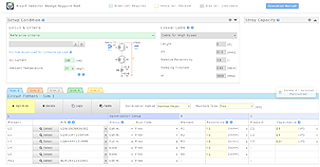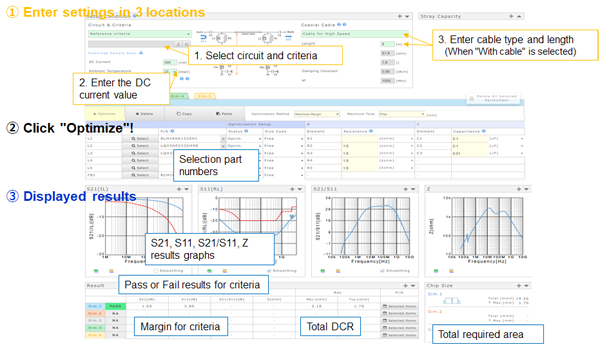
News
Murata design tool saves resources in PoC Bias-T Circuit Design
- Author:MURATA
- Release on:2020-12-29

As the automobile industry moves to incorporate advanced features such as self-driving and ADAS*3, manufacturers are adding more cameras and sensors for collecting information about the area around the automobile. For their role in transmitting much of the data detected by these cameras and sensors to the ECUs*4 without delay, high-speed automotive networks have taken on even greater importance. This has led to wider adoption of PoC, which is a high-speed transmission system that superimposes power over the data transmission interface in a single coaxial cable.
PoC must incorporate Bias-T circuits that prevent high-frequency signals from flowing to the power line with its low load impedance. These circuits must have high impedance over a broad frequency spectrum from control signals (several hundreds of kilo-bps) to video signals (several giga bps). Consequently, circuits must be configured by combining multiple inductors and the selected parts must not affect the high-frequency signal waveform. Considering this, considerable expertise is required for selecting combinations of parts that meet the required criteria for the characteristics of the Bias-T circuits installed by IC manufacturers, Tier 1 suppliers, and OEMs.
Using its knowledge acquired in application research for Bias-T circuits for PoC, Murata has developed a tool that assists in selecting inductors for Bias-T circuits for saving valuable design resources. By setting simple conditions, this tool provides instant results on whether the combination of parts satisfies the target criteria. More detailed conditions can also be set for enabling simulations having even higher consistency with actual measurements.
Features of design support tool
- Setting simple conditions enables designers to know whether the combination of parts satisfies the target criteria(Figure 1).
- Specific criteria can be uploaded to enable selection of part combinations satisfying the criteria.
- Board information and other detailed conditions can be set for enabling simulations having even higher consistency with actual measurements.
- Draws on Murata's design research knowledge for providing selection proposals.
Figure 1. Screen of Bias-T Inductor Selection Tool Design Support Tool
